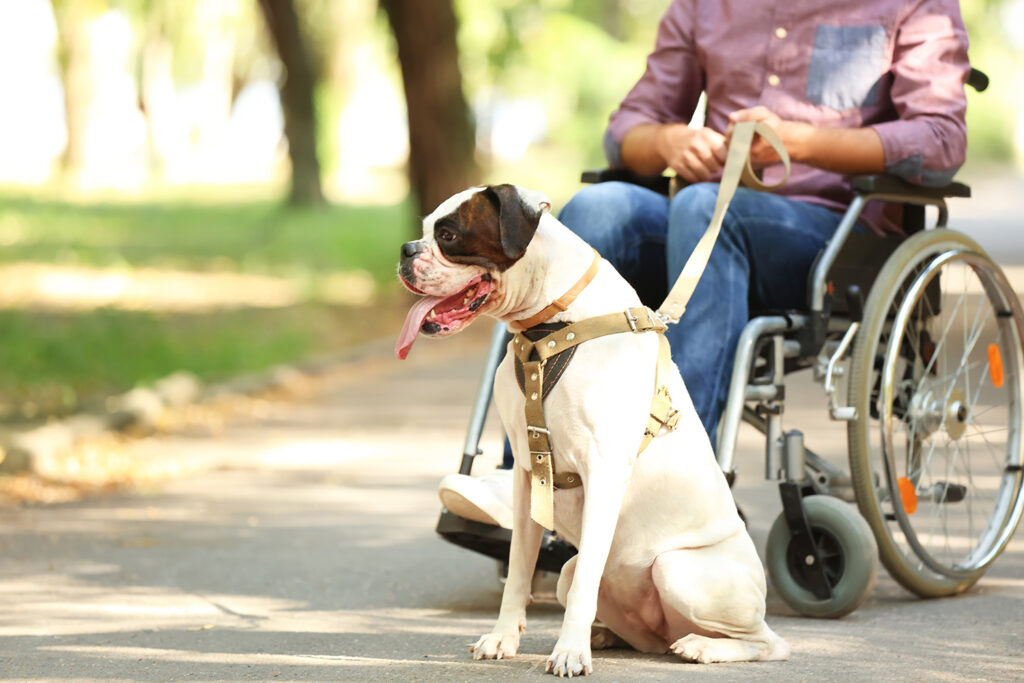You may have heard tales of canine heroes like Salty and Roselle, two service dogs that led their blind owners to safety from the World Trade Center during the 9/11 attack. Or stories like the woman who was denied taking her emotional support peacock on a flight. But what exactly is a service animal, and what do service and emotional support animals do?
Service and emotional support animals play crucial roles in improving their humans’ quality of life. They provide a calming distraction during disasters, help with depression, or perform tasks like alerting owners to seizure episodes or even sniffing out cancer.
SERVICE ANIMALS

Service animals are typically dogs—any breed and size—that have been trained to perform a task to help with their owner’s disability, such as picking up items for a person who uses a wheelchair, preventing a child with autism from wandering away, or calming a person with PTSD during an anxiety attack. People with disabilities may train their dog themselves and are not required to use a professional training program. While most service animals are canine, miniature horses, pigs, and monkeys may also be placed into service.
SUPPORT ANIMALS
Emotional support animals provide companionship, reduce loneliness, and can help with depression, anxiety, and certain phobias, but do not have special training to perform tasks that assist people with disabilities. They are typically dogs and cats but may also be birds, hamsters, hedgehogs, pigs, and horses. Experts suggest any animal can provide emotional support but recommend a domesticated animal that is likely to be acceptable to a landlord or airline authorities. Airlines are not required to transport unusual animals like snakes, ferrets, rodents, and spiders.
For adopters who want to train their current dog to become a service dog, Wilco Regional Animal Shelter Animal Services Director Misty Valenta recommends a Good Manners training. “When helping adopters choose a dog for that reason, we help pick one that the adopter bonds with, enjoys learning, and is not reactive around other animals, people, or strange environments,” she says. In the past, the shelter has partnered with organizations that train dogs to pair with military veterans, although it is not something the shelter does consistently.
Click here to learn more about service animals.
